Constant fear inside Ukraine’s captured nuclear plant
Workers describe the daily terror of working at the nuclear facility Russia has used as a shield for its attacks in recent weeks. Loveday Morris, Ievgeniia Sivorka and John Hudson report
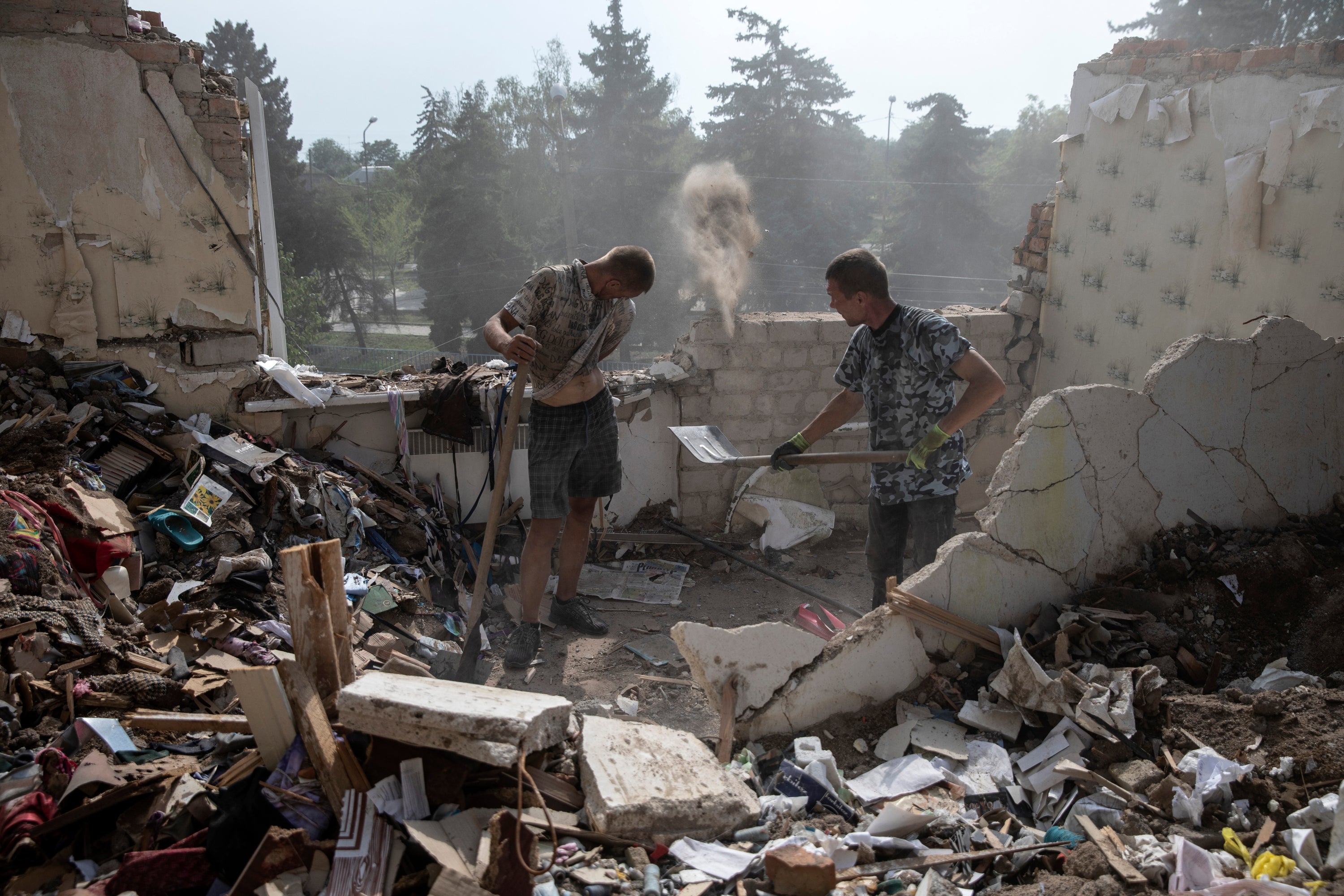
Your support helps us to tell the story
From reproductive rights to climate change to Big Tech, The Independent is on the ground when the story is developing. Whether it's investigating the financials of Elon Musk's pro-Trump PAC or producing our latest documentary, 'The A Word', which shines a light on the American women fighting for reproductive rights, we know how important it is to parse out the facts from the messaging.
At such a critical moment in US history, we need reporters on the ground. Your donation allows us to keep sending journalists to speak to both sides of the story.
The Independent is trusted by Americans across the entire political spectrum. And unlike many other quality news outlets, we choose not to lock Americans out of our reporting and analysis with paywalls. We believe quality journalism should be available to everyone, paid for by those who can afford it.
Your support makes all the difference.There’s no warning when incoming fire slams into the grounds of Europe’s largest nuclear plant, sending workers scrambling for cover.
“It’s kaboom – then everybody runs,” said one employee, messaging from Enerhodar, the Russian-held town on the banks of the Dnieper River that is home to the Zaporizhzhia Nuclear Power Plant.
Another employee, who sometimes works suspended off the ground to service equipment, said the vibrations are often so strong from outgoing Russian artillery fire that managers make him stop working.
The workers were among six from the plant who spoke to The Washington Post, describing the daily terror of working at the nuclear facility that Russia has allegedly used as a shield for its attacks in recent weeks.
Five of them had fled to Ukrainian territory in recent days and weeks as engineers and operational staff members join columns of cars leaving, adding worker shortages to a long list of concerns about the plant’s functioning.
Their accounts provide a window on the deteriorating security situation at the plant, which has triggered global concerns about the potential for a nuclear catastrophe. Some Ukrainian officials say stirring panic could be precisely Moscow’s aim, in the hope that international pressure will force Kyiv to make territorial concessions. Others say they fear Russia is laying the groundwork for a “false flag” attack it will blame on Ukrainian forces.
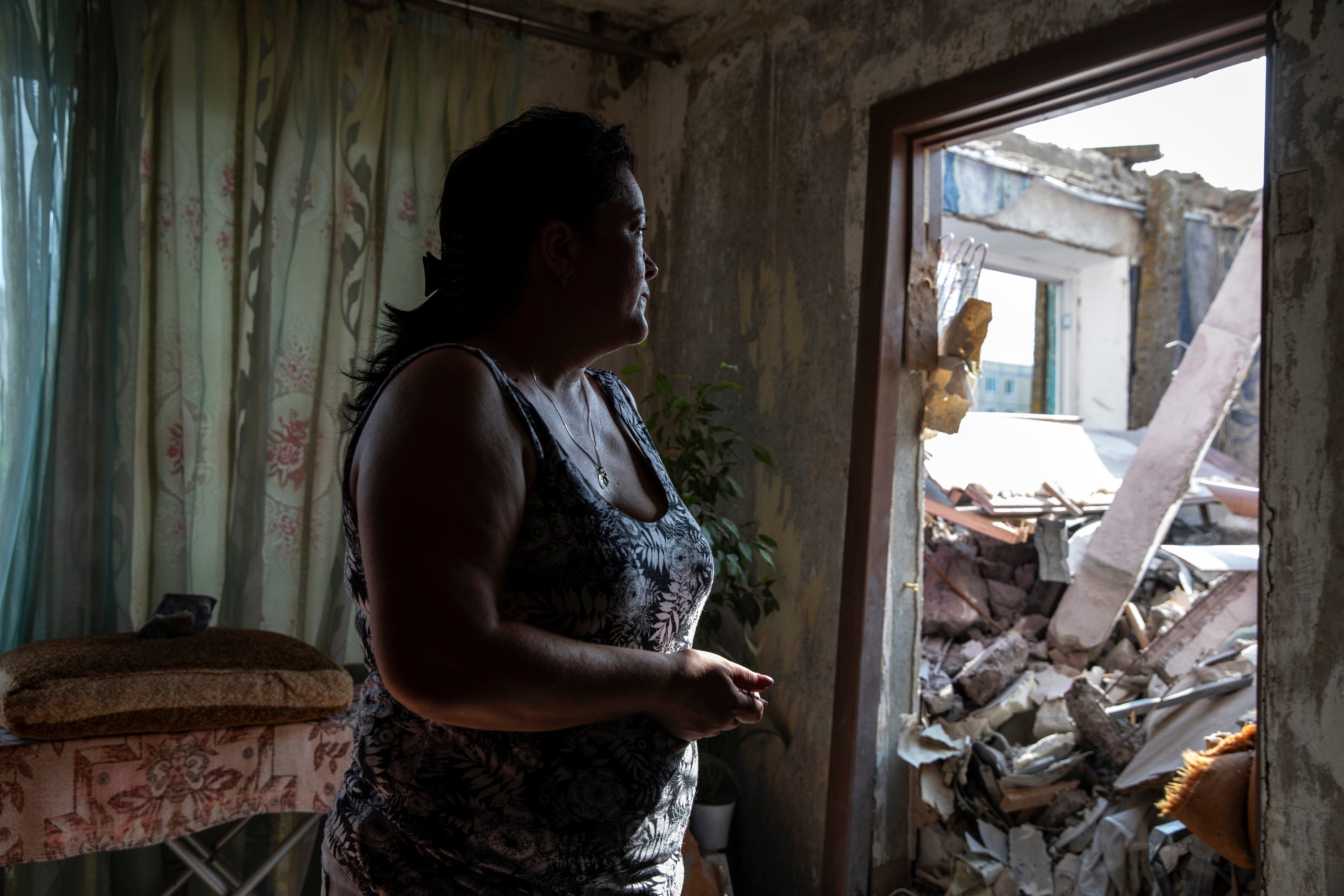
For the staff, that adds another layer of peril and fear to an already extreme working environment since Russian troops seized the plant six months ago. Since then, staff members have disappeared, camera phones have been banned and representatives of Rosatom, Russia’s state nuclear energy company, have been present at company meetings.
“Everything has changed. Our lives have flipped upside down,” Svitlana, 53, who worked as an accountant for the plant, said as she and her extended family arrived in Ukrainian territory south of Zaporizhzhia. The journey of 75 miles takes families as long as four or five days, with large traffic jams at Russian checkpoints where soldiers search cars and phones.
“You are constantly working under stress,” she said.
The plant’s Ukrainian workers describe the Russian troops in control becoming increasingly paranoid. At one point, they requested that cooling pools be emptied
There are few residents of Enerhodar, a town with a prewar population of around 50,000 people, who don’t have some kind of connection to the nuclear power plant.
The city, whose name means “Gift of Energy,” was built in 1970 by the Soviet Union for families of workers at the city’s coal-fired power station on the river. The nuclear plant, the site of which covers about half a square mile, was added 10 years later.
Its six pressurised light water reactors can be seen on the skyline from Ukrainian-held territory just three miles across the river, which has come under intense bombardment in recent weeks.
On the night of 3 March, as Russian forces rolled into the nuclear plant, workers huddled over laptops and television screens to watch grainy security camera footage of the plant coming under attack, live-streamed by its administration.
“We were watching it all online,” said the employee who worked servicing equipment. He, like others, did not want his name published, because of risks to his security and job. “My first concern was for the personnel that was there, and then also about the consequences.”
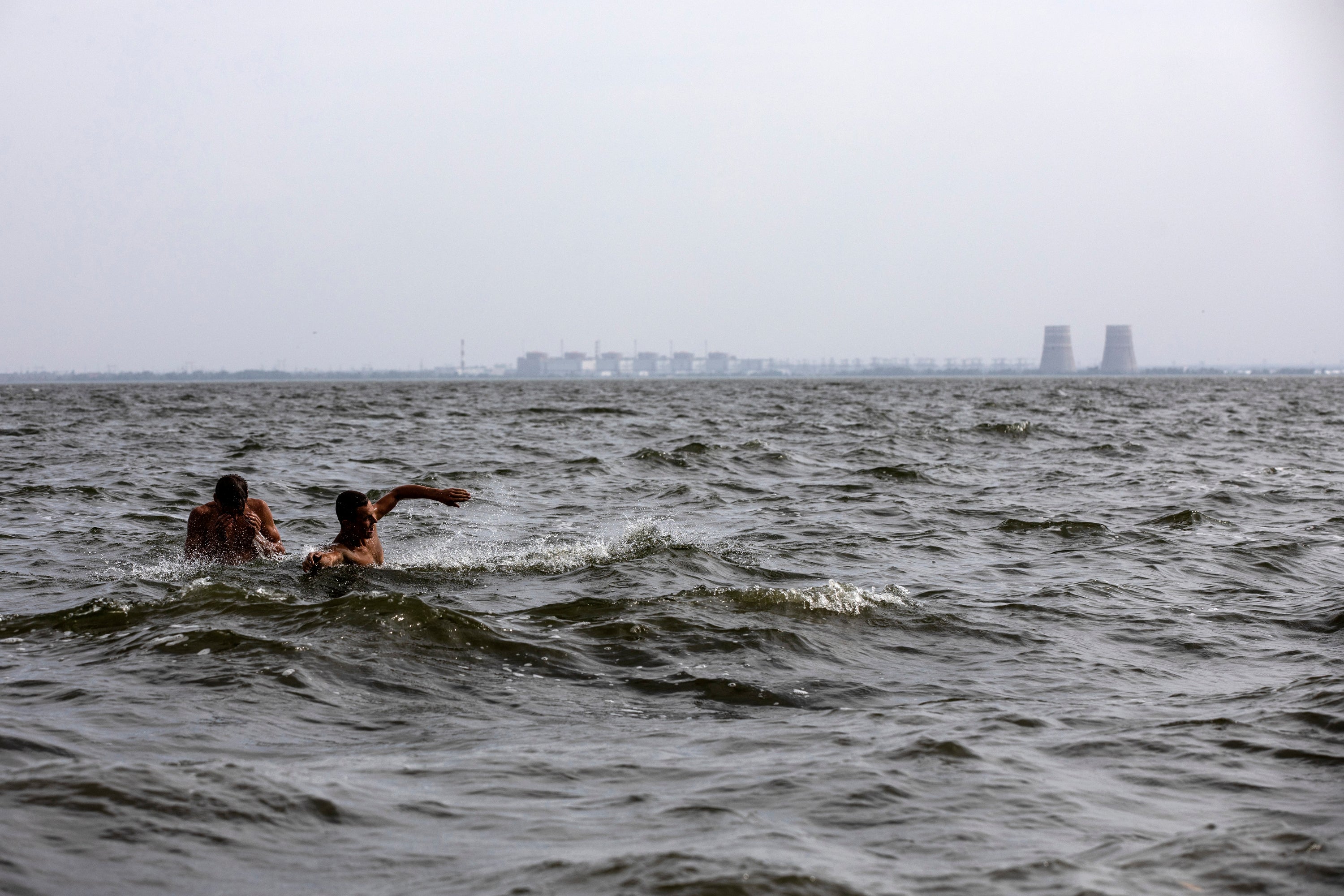
He returned to work the following evening. “The only difference was our mental state and their security on the entrance to the plant,” he said, adding that there was also a tank parked outside one of the reactors.
Russian guards told them they were allowed to go only to the reactor unit they were working on. Access to the roof areas was banned without special permission from Rosatom administrators, the worker said. Rosatom, the Russian nuclear energy firm, has denied it has taken over day-to-day operations of the plant but has acknowledged having a team on-site.
Relatives of some of the workers have complained they are unable to reach their loved ones, who have not responded to calls and text messages.
In the months since it was seized, the plant’s Ukrainian workers describe the Russian troops in control as becoming increasingly paranoid. At one point, they requested that cooling pools be emptied as Russians hunted for weapons that could be used against them, but backed down after being informed of the dangers.
Ten employees are missing, according to Energoatom, the Ukrainian operator of the plant. A 30-year-old, who also worked on equipment repairs, said one worker was taken at the gates as he left work and hasn’t been seen since.
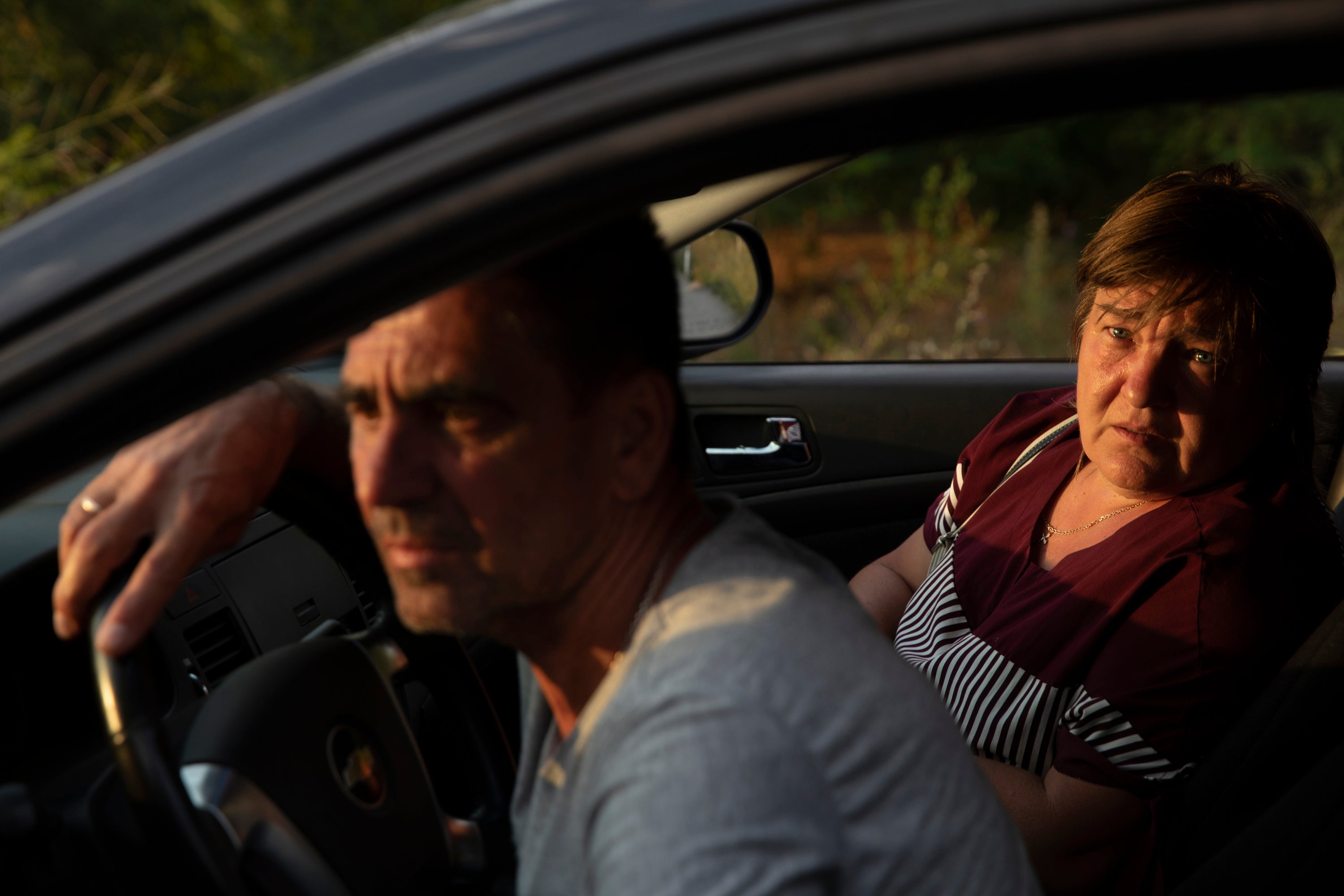
“Every day, there was a thought: ‘Will I come back home today?’” he said. “You are constantly in danger.”
Andriy Tuz, a spokesman for the plant who warned about the risks of incoming Russian fire when the plant was captured, appeared in a video posted by Russian media outlets in late June saying he retracted his statements.
In the video, in which he appears to read from a script, he says he is on “holiday” in the Russian city of Sochi. “It’s very beautiful here, very friendly people,” he said. “Now I understand that this information was false,” he said of his statements.
Residents say that Russian forces have become more paranoid since the Russian-installed head of the city’s administration was injured in an explosion.
“It feels like everything has ears, and if you say something, you might get kidnapped,” said one engineer at the plant who left last week.
Workers say they grapple with the decision of whether to stay or go.
“We were taught that even if there is a nuclear explosion, you have to stay until the last,” said the 40-year-old who works servicing equipment. He estimates that only around 10 per cent of workers doing similar jobs to his remain.
She says she believes it is in Russia’s interest to keep the plant intact as it attempts to connect the plant to the grid for occupied Crimea
“They are so stressed, they are not even sleeping at night,” he said. “The boiling point is really high. There is no connection to your family when you are at work. All you hear is the outgoing. You don’t know what’s happening.”
In terms of Russia’s immediate ground offensive, there appears to be little strategic advantage to its bombardment from the nuclear plant, other than spreading fear by dragging the plant into the conflict. The front lines in the area have barely changed in recent months, during which time there has been relative calm.
It was a month ago, on 16 July, that the first volley of artillery from Russian troops based in Enerhodar rained down on Nikopol, across the water. Residents say it began with weekends and evenings but has picked up pace in recent days.
On Wednesday, one rocket ripped through the apartment building of Natalya Khodak, 47, who had lived there since she was 5 years old. She watched as rescuers pulled her upstairs neighbour dead from the rubble that collapsed into her newly refurbished bedroom.
People worry all the time about a nuclear leak, she said.
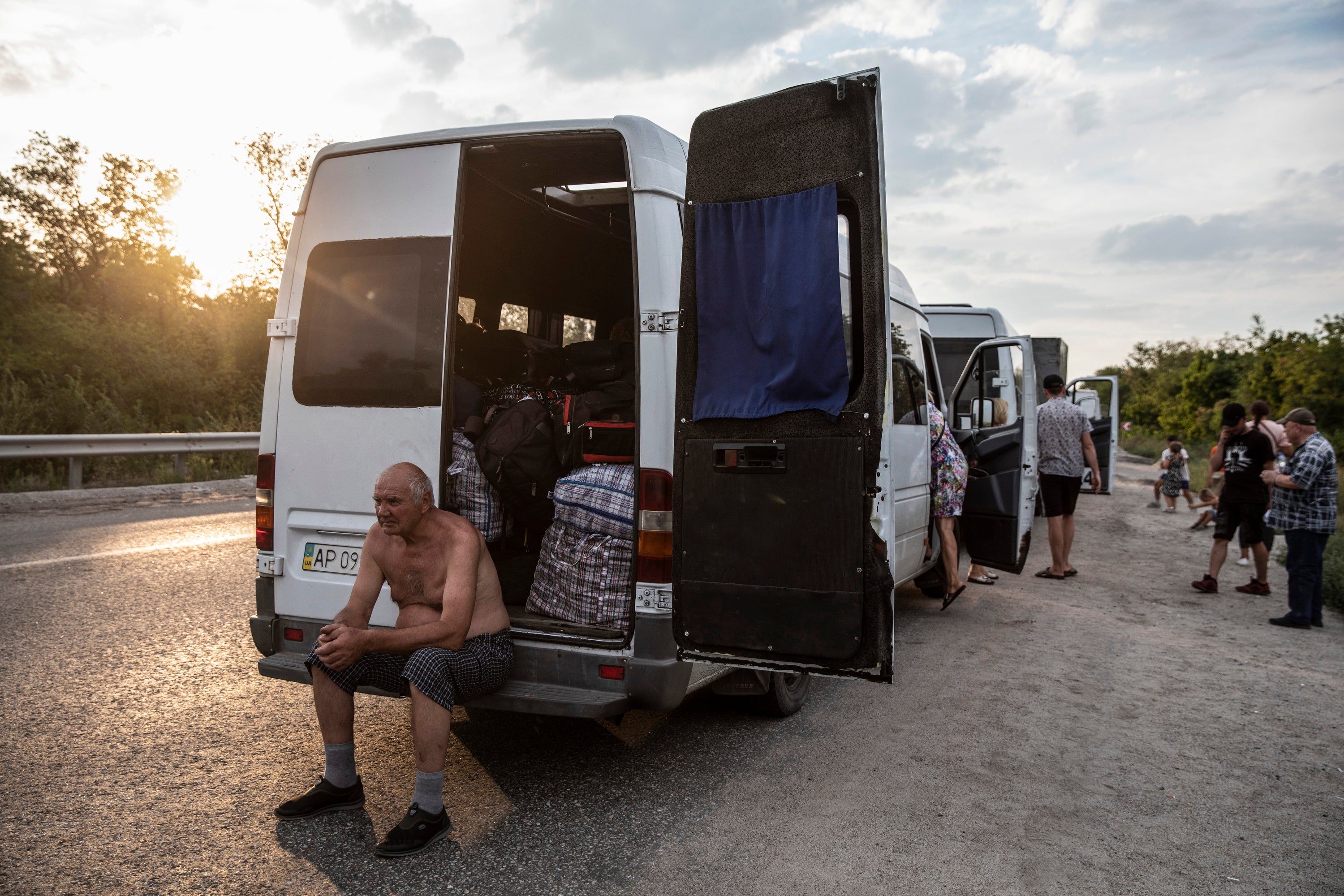
“Everyone thinks of Chernobyl,” she said, referring to the 1986 nuclear disaster in Ukraine’s north, part of the Soviet Union at the time. “But if there’s an explosion, there’s nothing we can do,” she said, the edge of the nuclear power plant just visible from her balcony.
Ukrainian troops here say they do fire back on Russian positions on the other side of the water – with caution.
“We aren’t firing on the nuclear plant, not under any conditions,” said Serhii Ukrainyets, a 42-year-old soldier. Another territorial defence soldier said Ukraine fires back when it has a “clean shot.” A spokesman for Ukraine’s military’s southern command declined to comment on questions, including whether Ukrainian forces are responding to Russian fire from around the plant.
Ukraine has insisted that Russian shelling has done the damage to the plant. Russia has “violated all international conventions and resolutions” during its occupation of the nuclear plant, said Ukraine’s energy minister, German Galushchenko, accusing Moscow of “nuclear terrorism.”
Russian shelling “creates unprecedented risks for the nuclear security of Ukraine, neighbouring countries, and the entire international community,” he said.
Ukrainian President Volodymyr Zelenskyy said over the weekend that Russian soldiers shooting from the cover of the plant, or toward it, would become a “special target” for Ukraine’s secret service and military.
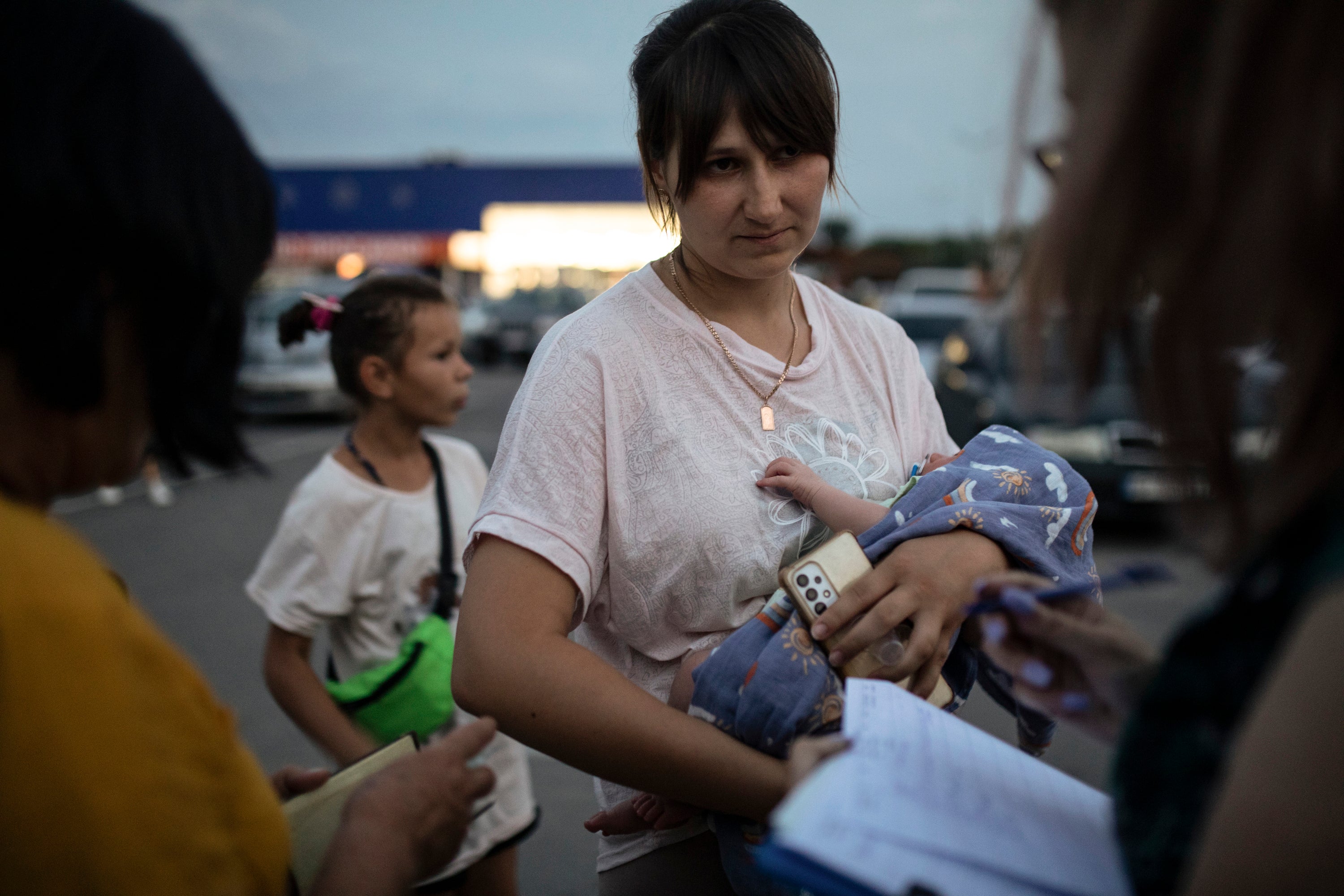
The plant worker still at the site who described the recent explosions said he did not believe Ukrainian troops could be responsible, because the time between the outgoing fire and incoming sounds too short – just a few seconds.
Ukrainian forces have targeted Russian military at the plant before, releasing footage on 22 July of a drone strike on army tents within the perimeter and a rocket launcher. Following that incident, the Russian military moved trucks and equipment inside the hall at reactor Unit 1, the 40-year-old worker said. Staff access has also been blocked to the emergency crisis centre under the plant, which works as an effective bunker, workers said.
Unlike the reactors at Chernobyl, the six pressurised light water reactors in Enerhodar are built under an encasement of reinforced concrete and steel.
“It can handle a small plane falling on it,” said Olga Kosharna, a nuclear expert and former board member of Ukraine’s nuclear regulatory inspectorate. She says she believes it is in Russia’s interest to keep the plant intact as it attempts to connect the plant to the grid for occupied Crimea.
The high-stress environment for the workers adds to the danger that any emergency could spiral out of control, experts say. Nuclear accidents, such as the Three Mile Island incident in the United States, have been compounded by human error.
“I’m concerned for the personnel,” Kosharna said. “The risk of a mistake is through the roof. In an emergency there are protocols, and if a lot of personnel have left, that will be a problem.”
The remaining worker that spoke with The Post said that he’d wanted to stay, hoping for victory.
Now the security situation is deteriorating, and there are fewer and fewer of his pro-Ukrainian friends left.
“Perhaps,” he said, “it’s time to leave.”
© The Washington Post




Join our commenting forum
Join thought-provoking conversations, follow other Independent readers and see their replies
Comments